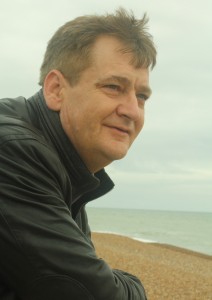Musicians of All Saints, St Luke’s, Brighton,
8 November 2014
If the main focus of the concert was to bring us the premiere of Peter Copley’s new Piano Concerto, the first half led us gently towards it. The Musicians of All Saints under Andrew Sherwood opened with Handel’s Concerto Grosso Op6 No1. If the rich acoustic tended to over-romanticise the sound it also gave an extra bloom to the strings which easily filled the building. The solo trio was impressive in the Adagio and there was a lively zeal to the final Allegro.
Mozart’s Divertimento K 138 is an early work which produced both fire and humour in the final Presto. However the finest moment of the first half came with a deeply felt reading of Grieg’s string arrangement of Last Spring, its gentle melancholy and warmth being splendidly balanced.
The three movements of Peter Copley’s new piano concerto may last only a little over twenty minutes but the intensity of the writing holds us firmly throughout. The opening Toccata with Interlude is marked presto agitato and tips us headlong into an insistent sycopated rhythm which for most of the time contrasts staccato strings against rolling piano figuration. This suddenly gives way to a beautiful solo line for the first viola, a post-Elgarian figure somewhere between nobility and pain. When the dominant rhythmic urgency returns the piano takes a more lyrical though still powerfully etched position. At the end of the movement a solo violin takes up the viola melody which is cut off suddenly and the piano rounds things off with a deft downward plunge.
The second movement Chacony allows the piano to come more into its own. Where the opening movement had often seemed to absorb the piano into the overall texture, here the piano has more chance to speak for itself, being allowed an extended quasi cadenza which brings together many of the ideas already explored across the first two movements.
The final Fugue and Scherzo opens with the strings alone and it is some time before they are joined by the pianist. There is a sense of joy and almost frenetic energy here, particularly in the piano part which sparkles and scintillates throughout. As the climax approaches the pianist returns to the rolling figures which have become such of part of the composition until a final glissandi hangs in the air above a last pizzicato from the strings. Margaret Fingerhut communicated a sense of delight in the work throughout and her playing had a lightness of touch and joyfulness which was surely intended by the composer.
The sense of enthusiasm and life are evident throughout this new concerto which is to be given a number of performances over the coming months. Hopefully you will get a chance to hear it – the second performance will be on January 29th 2015 7.30pm at Blackheath Concert Halls with Trinity Laban Conservatoire Sinfonia, conducted by Andrew Sherwood with Margaret Fingerhut again as the soloist.
Having Margaret Fingerhut available for the day enabled the Musicians of All Saints to run a master-class in the morning for a number of highly talented if very young pianists. They performed a wide range of works for us, and were then encouraged to look at specific aspects of their preparation. Margaret Fingerhut stressed that practice should be just that – working in specific details, not simply playing pieces through again and again. She encouraged the young players to draw the sound out of the piano through their sense of touch rather than demanding a reaction from it. She reflected on the fact that for pianists, starting to learn is easy as the notes are already there. The problem comes with learning to control touch and nuance, particularly when the right hand seems built the wrong way round for voicing a melodic line. From the quality of playing we heard from these young performers we could easily hear of them again in a few years’ time!
The next concert from the Musicians of All Saints will be given on Saturday 17 January 2015 at All Saints Centre, Lewes. www.mas-lewes.co.uk

